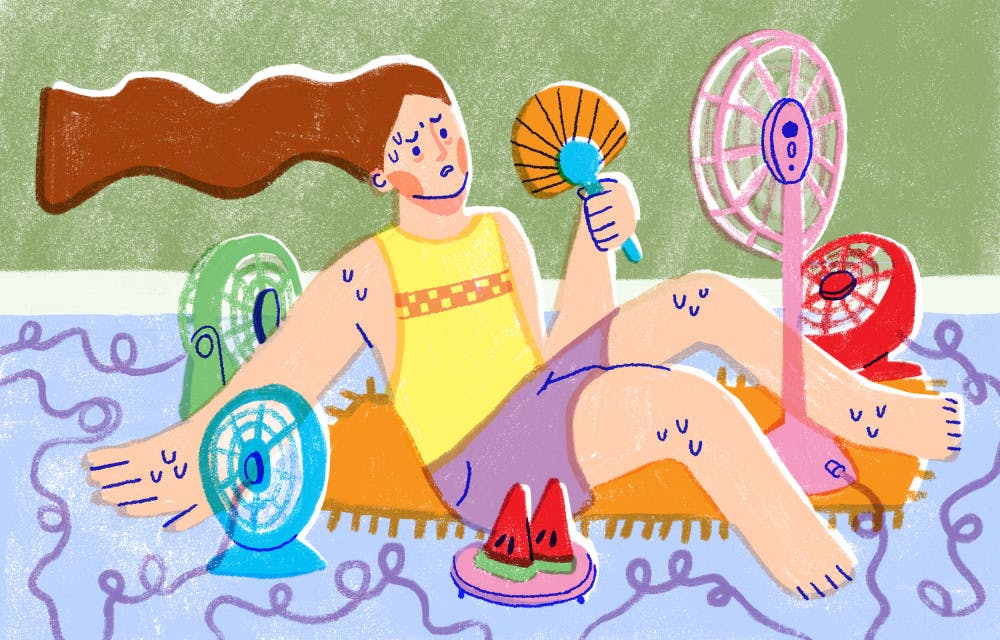A multi-day heat wave at the end of June prompted complaints from students about the excessive heat with limited air conditioning and what they called an inadequate University response.
The heat wave, which peaked at 97 degrees on Tuesday, June 29, has noticeably impacted students living in dorms on campus — the vast majority of which have no central air conditioning — during an unprecedented full semester during the summer. The wave contributed to the hottest June on record for Providence since 1943.
Rhys Long ’24, who lives in Jameson-Meade, said that the wave greatly affected his own quality of life. “On the days where the heat index is almost 110 degrees, it’s too warm to focus and too warm to sleep,” he said.
Arvind Sridhar ’24 also said that the heat impacted his ability to function as a student. “It was quite brutal, and a big inhibitor to doing work,” he said. “If I normally operate at a level of ten, with the heat I was operating at a level of six.”
Bryce Jones ’23 agreed that the heat “makes working a lot harder and makes it harder to think.” He said that his dorm, Young Orchard, “traps heat like a sweat lodge” due to its age and building material, exacerbating the heat.
All three students expressed frustration, arguing that the University had not done enough to support on-campus students during the heatwave. They criticized the lack of access to air-conditioned spaces, including libraries, as well as the University’s ban on portable air conditioner units.
Eric Estes, vice president for campus life, wrote in an email to The Herald that “the electrical infrastructure of Brown’s full range of residence halls can not support widespread usage of individual air conditioning units across campus.”
On the University’s response to the heat, he wrote, “We’ve taken some steps similar to heatwaves in other years, yet at a more expanded scale.” These included a Main Green event where “ice pops, cooler bags, water bottles and reusable straws were handed out to students,” he wrote. The University expects to open more buildings, including the Campus Center, as vaccination rates continue to improve, he added.
But the three students said that these measures were not enough.
Long said that the University should have released a list of facilities with central air conditioning to accommodate the needs of students in dorms without it. “They’ve known for over a year that they would have almost 2,000 kids on campus this summer,” he said, yet access to air-conditioned spaces was still limited, which he called “negligent.”
Long also proposed that the University should improve the electric grid to allow for more widespread air conditioning, a solution which he says is especially important in the context of rising temperatures due to climate change.
Jones agreed that the lack of access to such spaces was disappointing. “The libraries have such short and strange hours that there really is not much of an escape,” he said.
Sridhar said that more should be done in the long term to improve the University’s electrical system. “Any college of this nature should have an updated electrical system because of the contained nature of the student body in these dorms,” he said. “This summer has shown why it’s more important than ever to start that process in revamping the ability to address huge heat waves as they continue to increase through the rest of the summer and through the school year.”

ADVERTISEMENT




